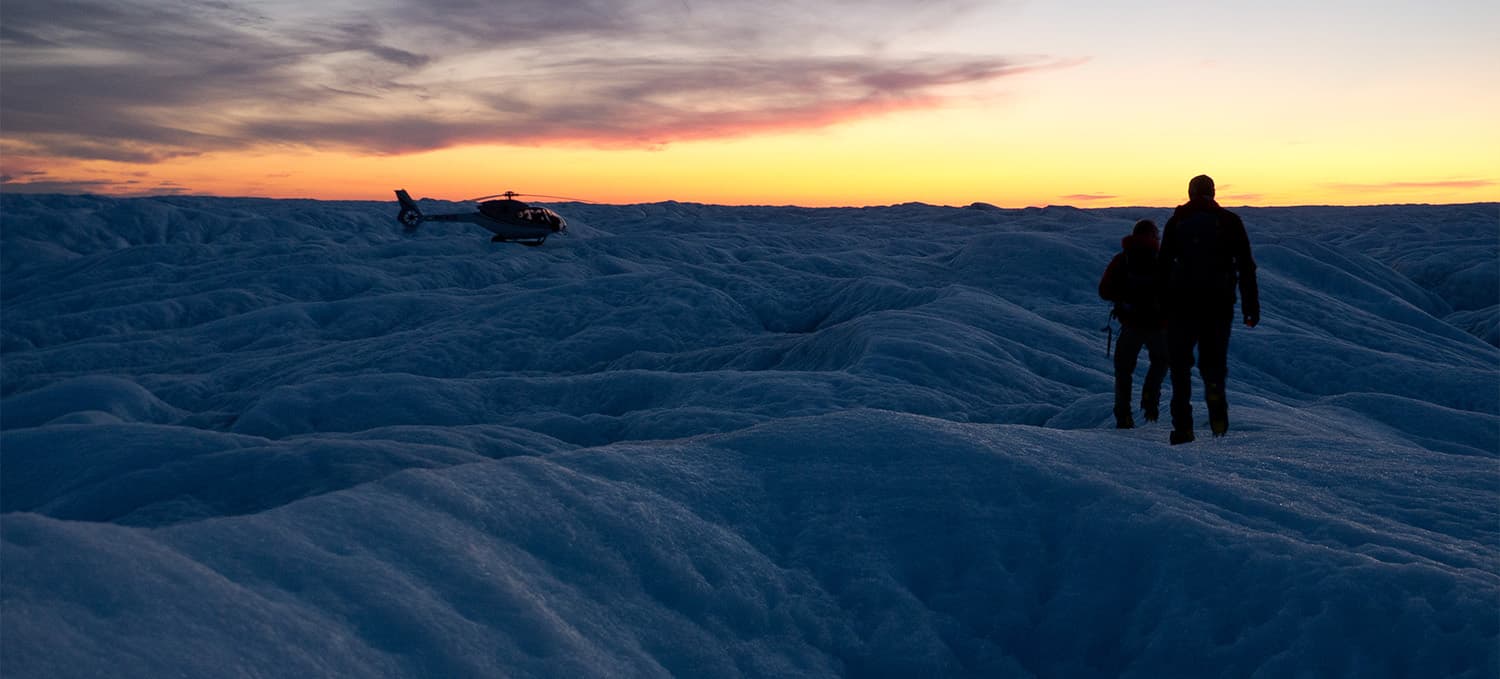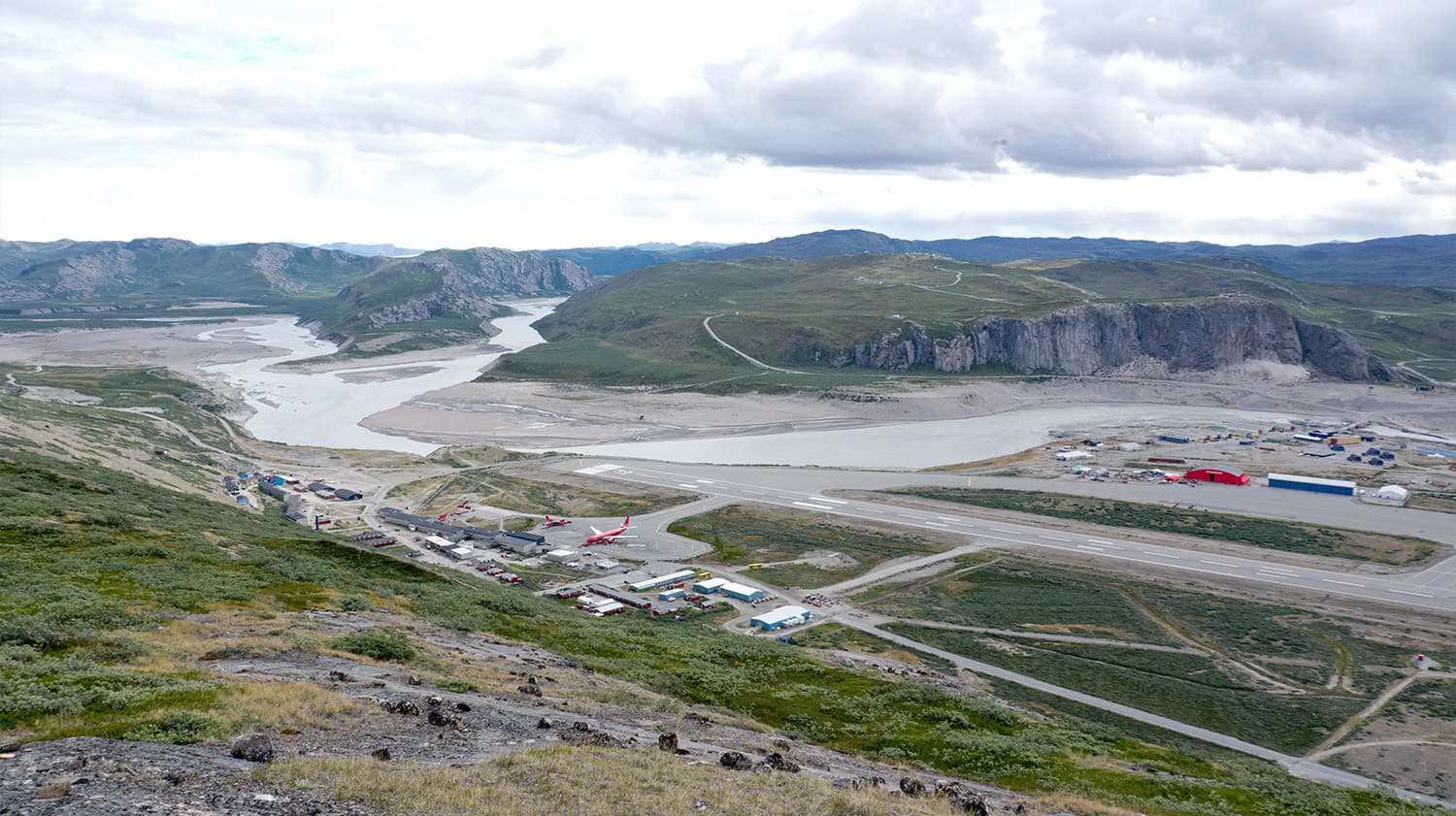Engineering beneath the ice sheet
November 2024
In 2011 I spent a month on expedition in Greenland, conducting research into the glacial rivers that flow deep beneath its enormous ice sheet.
Based in a small camp beside a glacier, we travelled by helicopter far out onto the ice, deploying electronic beacons that we hoped would flow through hidden, subglacial rivers. As a newly minted engineering graduate, my place on a geographical research project wasn’t an obvious fit, but by chance I found myself in the centre of a unique venn diagram: can use crampons, can solder, can whitewater kayak.

Peering into moulins
The expedition was part of a multi-year research project, organised by the University of Bristol’s School of Geographical Sciences. Our basecamp was on a rocky plain besides the Leverett glacier, around twenty kilometres by road and foot from the small hamlet of Kangerlussuaq.
Hamlet is perhaps unfair, given that Kangerlussuaq is the site of Greenland’s main international airport. But with a population of only 500 and no roads to anywhere else (at the time at least), it certainly felt like it.
The summit of the Greenland ice sheet is a flat, white expanse of snow-covered ice over 3000m in altitude. Lower down the glaciers that flow towards the sea are anything but flat as they ripple, buckle and then carve off in gigantic lumps at their terminus. Meltwater flowing on the surface will occasionally find a weakness in the ice sheet and plunge down a roaring void known as a moulin.
These moulins were what we were hunting for.

Animal trackers and Christmas baubles
Our team was interested not in the rivers that flow atop the ice sheet, but those flowing beneath it. Water flowing at the bed of the glacier lubricates the interface between the ice-sheet bed and ice flow. This meltwater has a big impact on how the stress and strain of the ice affects a glacier’s motion.
Understanding the characteristics of these flow paths at the bed of glaciers is key, but getting to them is hard. Travel 50km out onto the glacier and the ice can already be 1km thick!
Two chemical tracer approaches had been used previously: rhodamine dye tracing, and gas tracing using sulphur hexaflouride (SF₆) which is heavily used to both insulate high voltage circuits and track ocean currents. Our project planned to introduce a third: directly measuring what was happening by chucking sensors down the moulin and then fishing them out the other side.



The design of our little “ETracers” was fascinating, although I joined the project too late to have any real influence on their design. At the core was a Honeywell 40PC pressure sensor with an operating range of 0–1.8 MPa (equivalent to 180m head of water), a small Lithium battery, 512kb EEPROM, helical antenna, PIC and a Radiometrix VHF radio transmitter. This sort of transmitter might be more at home on the tracking collar of a rare animal, but when paired with a suitable receiver it was the ideal technology to transmit small bytes of data through hundreds of metres of ice.
The casing, on the other hand, was a Christmas bauble.


Specifically a Christmas bauble painted bright orange, with the electronics slotted inside a sawn-off PVC pipe and the remaining space filled with a specially prepared potting compound. Each ETracer was weighed before potting, and a precise volume of plastic beads added in an attempt to achieve neutral buoyancy. The theory being that the ETracers would neither sink to the riverbed nor get stuck in an eddy beneath the ice, but simply bob along to the end.
As it turned out, once we chucked them down the moulins we would never see them again.
Superglue at sunset
Our first ETracer deployments were planned for between seven and fifteen kilometres out onto the ice. This meant we would be flying in by helicopter. Since my skills venn diagram also included “can use a camera” I got the option to both sit by the door and leave it open during the flight if required. I jumped at the first, but gracefully declined the latter.


The venn diagram for the pilot, it turned out, did not include previous experience landing a helicopter on the ice sheet, a fact he only told us once we were in the air. With no trees, rocks, or in fact anything for scale, as we descended it quickly became apparent that the small bumps on the surface were in fact huge peaks and troughs of ice like a rolling sea, frozen in motion. Cautiously, we went around once more before gently landing onto the flattest bit we could find.
Stunningly beautiful and freezing cold, we got to work assembling ETracers by aralditing the two bauble halves together, activating the batteries in the process. A quick check with the VHF receiver and they were gone, plunging into the darkness beneath the ice.




Life in basecamp
My month in basecamp was a mix of engineering, video editing and domestic chores.
The camp had been established two years previously on a sandy plain besides the glacial morraine. The sand was mildly magnetic thanks to the iron content of the surrounding geology, and consequently every tent zip had long since been downgraded to small patches of sewn on velcro.
Until April you can literally walk all the way back to town, but during summer the frozen river crossing approach became a fast flowing torrent. Cut off from the world with only herds of musk ox for company, the river was rigged with a hand pulley and small inflatable rib to reduce the dependence on helicopters for access. We had a satellite phone (for emergencies) and a diesel generator (for baking bread), although today I presume camps are all equipped with Starlink and solar panels. The bread was a real treat, for the previous camp inhabitants had eaten most of the delicacies such as chocolate and baked beans. Each afternoon I would cook myself a plate of plain spaghetti, topped with olive oil and a can of sweetcorn, in a vain attempt to use up the remaining supplies before the camp closed for the season.
We made two more deployments of ETracers on foot, along with a rhodamine dye deployment which stained the water, ice and everything it touch a deep shade of crimson. One day a colleague and I hiked a few kilometres out onto the ice to repair a collapsed GPS monitoring station. Mounted atop an unwieldy scaffold pole, we re-drilled the narrow, three metre deep hole by hand with the longest drill bit I’ve ever seen, before wrestling the apparatus back upright. And every evening before dinner I hiked for an hour up the tallest hill with my radio to listen to our ETracers chirping away happily beneath the ice.







One last chance
For a while we had thought kayaking across the glacial outflow would be a good way to retrieve the ETracers. Given the state of the river crossing, kayaking to escape from base camp was a more likely scenario. For weeks, not a single one of the 48 ETracers that we dropped into the ice emerged at the other end. Based on the lack of movement I detected during my daily radio observations, I suspect they may well be sat inside the moulin to this day.
Nearing the end of our trip, and desperate for success, we made one final hike up onto the ice. Locating a new moulin one kilometre out, we waved goodbye to our final two ETracers and crossed our fingers.
And then, 35 hours later, a single, solitary ETracer made its way through the deep, winding, tumultuous, meltwater flow paths beneath the ice, and emerged back into the sunshine on the other side.
With huge thanks to the staff at the University of Bristol, in particular Professor Steve Burrow and Dr Liz Bagshaw, for the chance to combine my engineering and adventuring instincts together in such a spectacular environment.
Further reading
The work from the expedition is summarised in the paper E-tracers: Development of a low cost wireless technique for exploring sub-surface hydrological systems.
The paper Novel Wireless Sensors for In-Situ Measurement of Subice Hydrologic Systems (Bagshaw et al., Annals of Glaciology, 2017) provides a very readable overview of the whole ETracers project, along with its successor the CryoEgg. Further updates were presented in this 2021 paper.
The work comparing rhodamine dye and SF₆ tracing by Dave Chandler is summarised in this 2013 paper.

